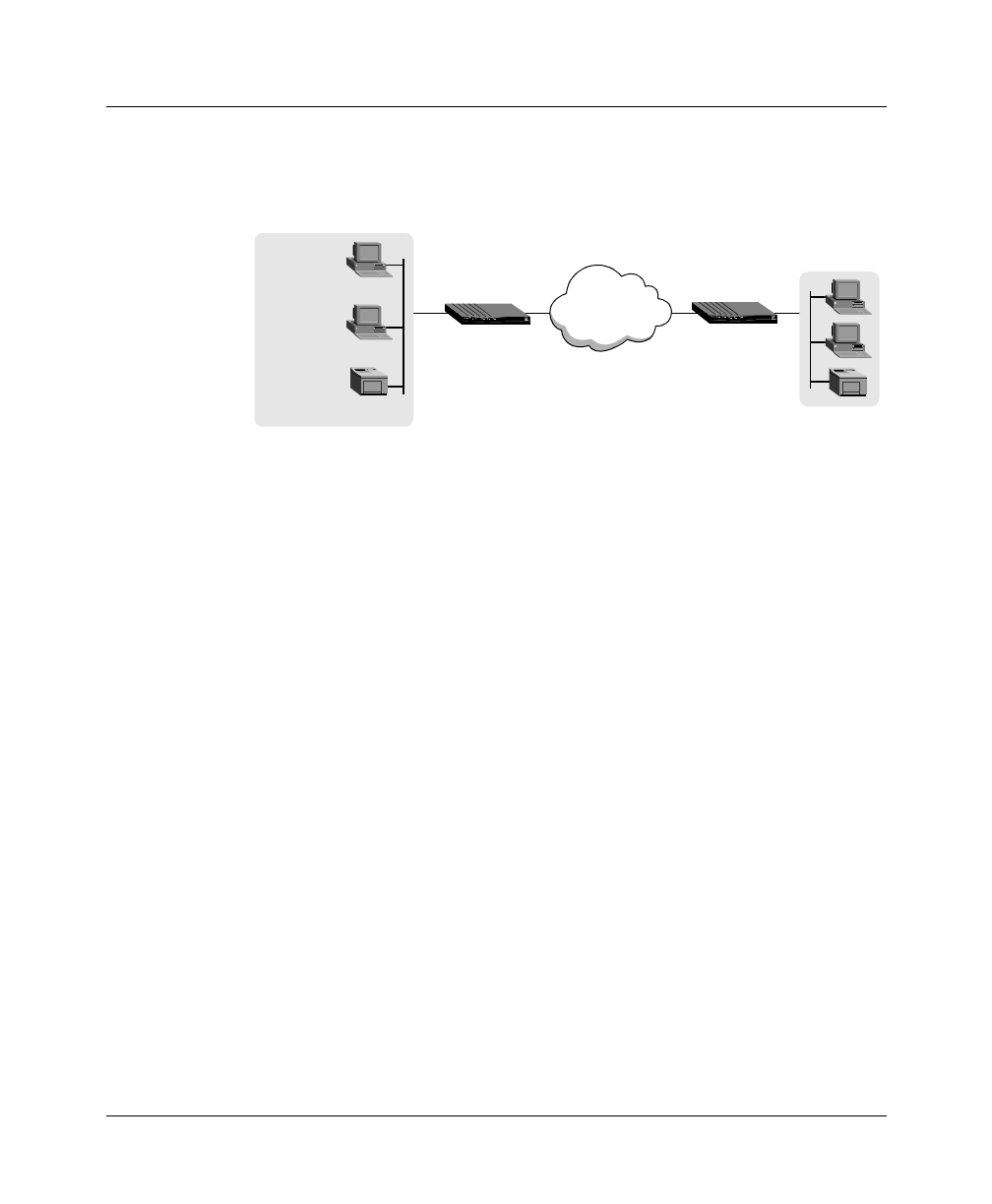User`s guide
Table Of Contents
- Ascend Customer Service
- How to use this guide
- What you should know
- Documentation conventions
- How to use the on-board software
- Manual set
- Configuring WAN Connections
- Configuring IP Routing
- Introduction to IP routing on the Pipeline
- Managing the routing table
- Parameters that affect the routing table
- Static and dynamic routes
- Configuring static routes
- Specifying default routes on a per-user basis
- Enabling the Pipeline to use dynamic routing
- Route preferences
- Viewing the routing table
- Fields in the routing table
- Removing down routes to a host
- Identifying Temporary routes in the routing table
- Configuring IP routing connections
- Ascend Tunnel Management Protocol (ATMP)
- IP Address Management
- Connecting to a local IP network
- BOOTP Relay
- DHCP services
- Dial-in user DNS server assignments
- Local DNS host address table
- Network Address Translation (NAT) for a LAN
- Configuring IPX Routing
- How the Pipeline performs IPX routing
- Adding the Pipeline to the local IPX network
- Working with the RIP and SAP tables
- Configuring IPX routing connections
- Configuring the Pipeline as a Bridge
- Defining Filters and Firewalls
- Setting Up Pipeline Security
- Pipeline System Administration
- Pipeline 75 Voice Features
- IDSL Implementations
- APP Server utility
- About the APP Server utility
- APP Server installation and setup
- Configuring the Pipeline to use the APP server
- Using App Server with Axent SecureNet
- Creating banner text for the password prompt
- Installing and using the UNIX APP Server
- Installing and using the APP Server utility for DO...
- Installing and using the APP Server utility for Wi...
- Installing APP Server on a Macintosh
- Troubleshooting
- Upgrading system software
- What you need to upgrade system software
- Displaying the software load name
- The upgrade procedure
- Untitled

Configuring the Pipeline as a Bridge
Managing the bridge table
5-8 Preliminary January 30, 1998 Pipeline User’s Guide
Figure 5-2 shows the physical addresses of some nodes on the local Ethernet and
one at a remote site. The Pipeline at site A, configured as a bridge, gradually
learns addresses on both networks by looking at each packet’s source address.
Figure 5-2. How the Pipeline creates a bridging table
The resulting bridging table looks like this:
0000D801CFF2 SITEA
080045CFA123 SITEA
08002B25CC11 SITEA
08009FA2A3CA SITEB (Connection Profile #5)
Entries in the Pipeline unit’s bridge table must be relearned within a fixed aging
time limit, or they are removed from the table.
Static bridge-table entries
The administrator can specify up to eight static bridge-table entries in Bridge
profiles. Each connection that has a static bridge table entry can have the Dial
Brdcast parameter set to No.
Dial Brdcast is a very convenient way of bridging packets if the Pipeline has only
a few bridging connections, but it can be expensive in an environment where
many profiles support bridging. (For more information, see “Broadcast addresses
and Dial Brdcast” on page 5-3.) If Dial Brdcast is turned off in a Connection
profile, the Pipeline does not initiate dialing for that connection on the basis of
WAN
Ethernet
Site B
Site A
Ethernet
08009FA2A3CA
0000D801CFF2
080045CFA123
08002B25CC11










